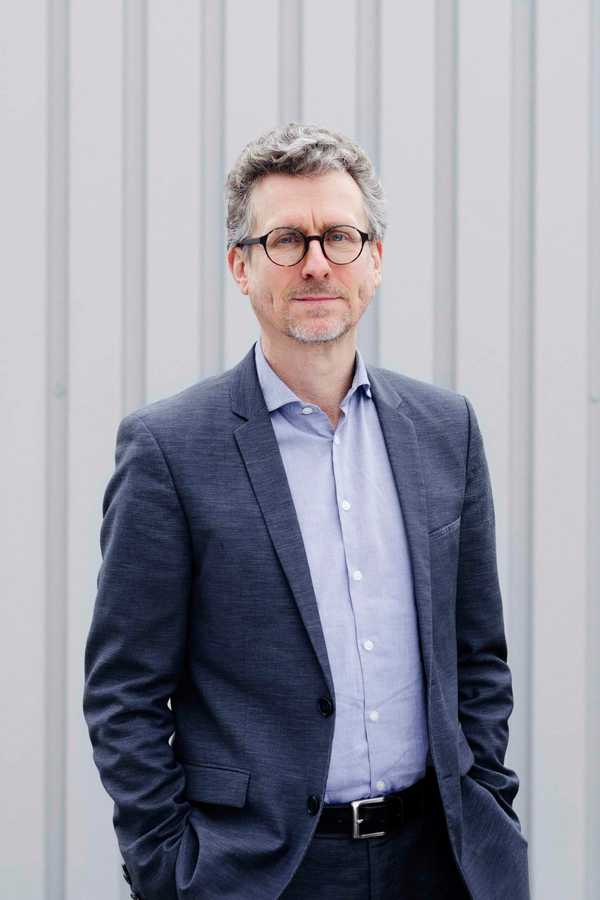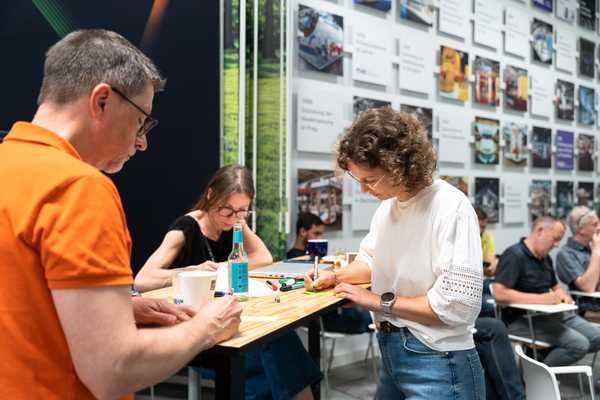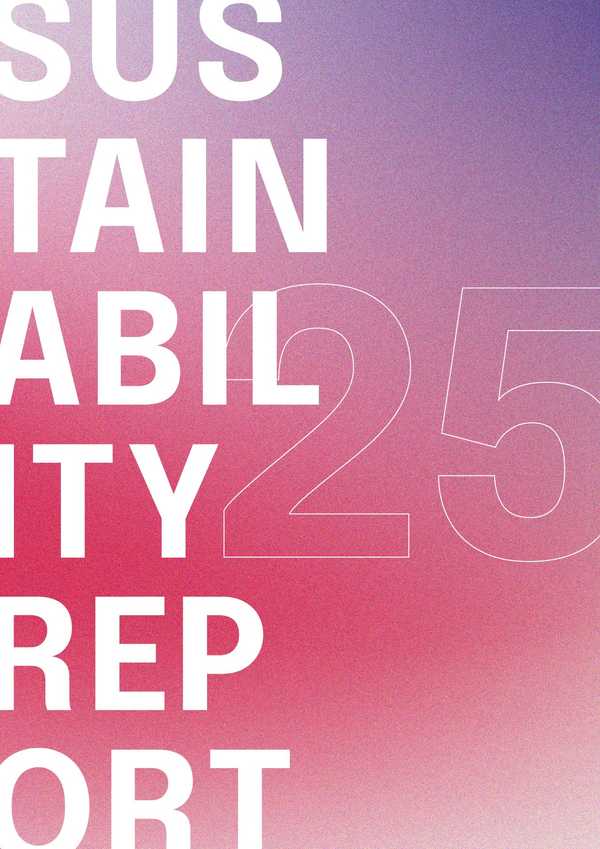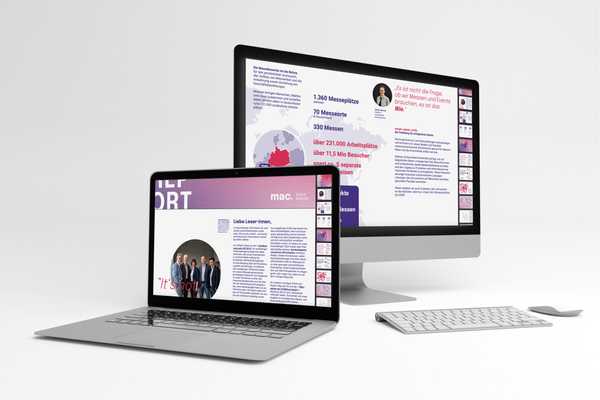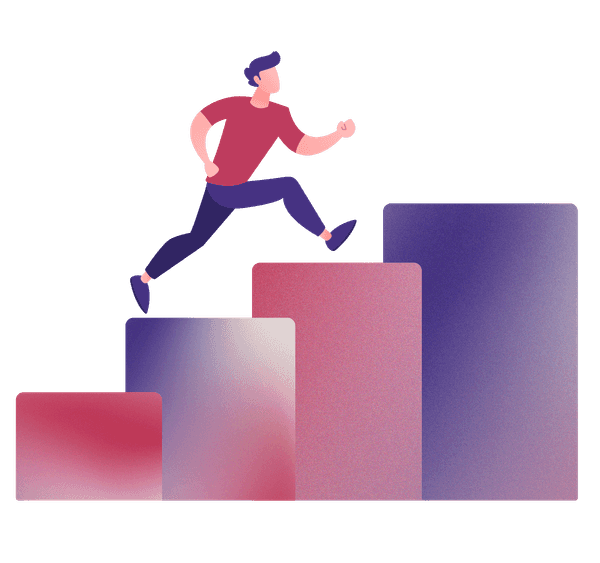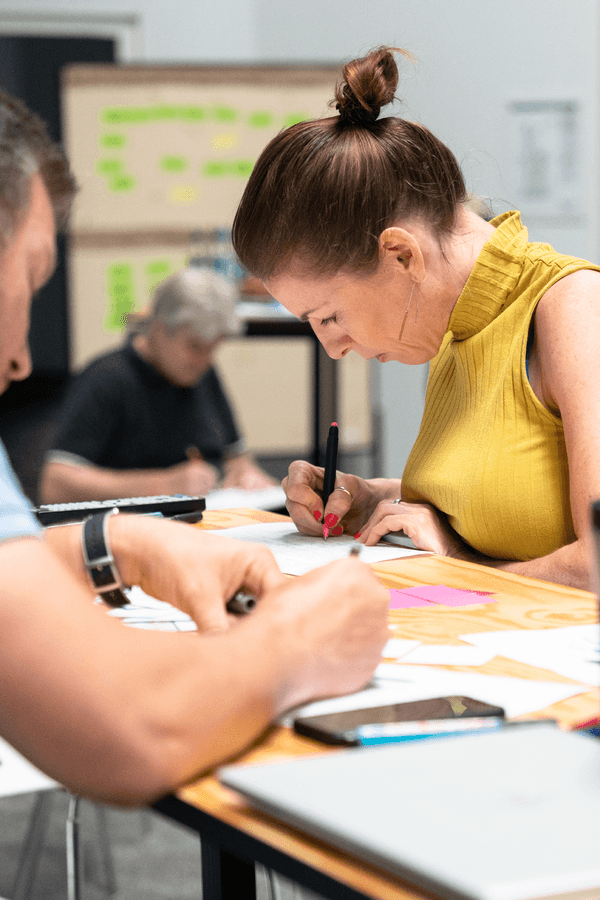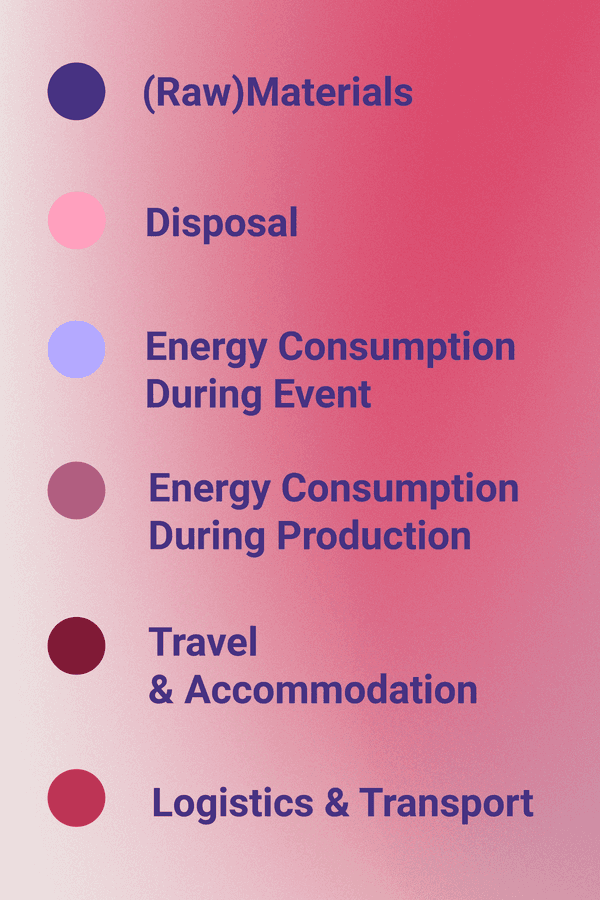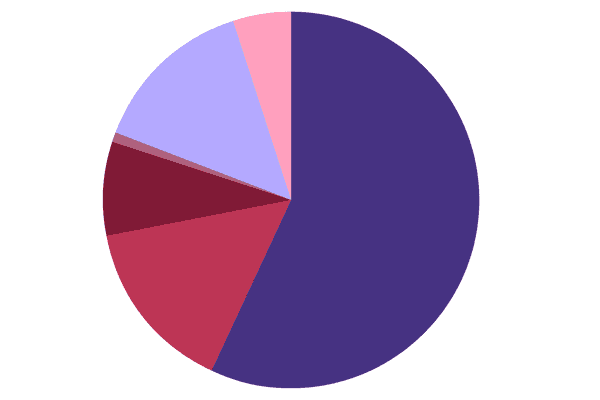We take a holistic view of sustainability.
Ecological and social responsibility are inseparable for us. In addition to the responsible use of resources and materials, we pay attention to safety and long-term relationships. This also includes enabling good working conditions for everyone and strengthening customer relationships and partnerships with added value.
A clear competitive advantage in our industry: we map the entire value chain on our campus and therefore have everything in our own hands: from consulting and design to production and storage. This not only makes it easier for us to monitor quality, costs and customer service, it also enables us to evaluate projects with a high degree of precision from an ESG perspective.
With our comprehensive expertise in the field of sustainability, we support your project and offer workshop formats tailored to your needs in order to realise sustainable experience spaces together.
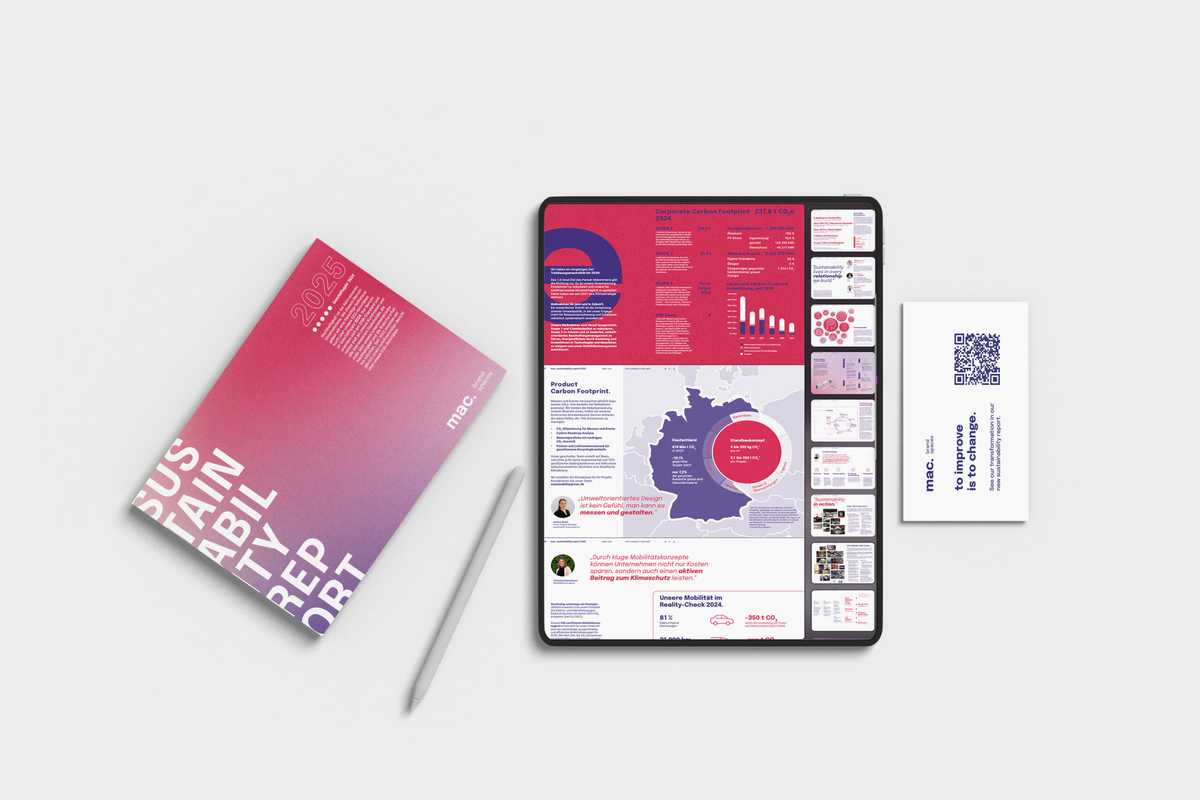
Socially sustainable.
Acting sustainably starts with our own employees. Our great colleagues are the engine that keeps our wheels turning. We are constantly working to improve workplace conditions for them. Occupational health and safety and the continuous minimisation of risks have the highest priority. The compatibility of work and family is also very important to us. Flexible working hours, mobile working and a significantly expanded range of part-time positions are examples of this.
Our long-term collaboration with employees and suppliers is based on respectful and value-orientated cooperation. A 15 per cent training quota in the company is evidence that we take social responsibility seriously.
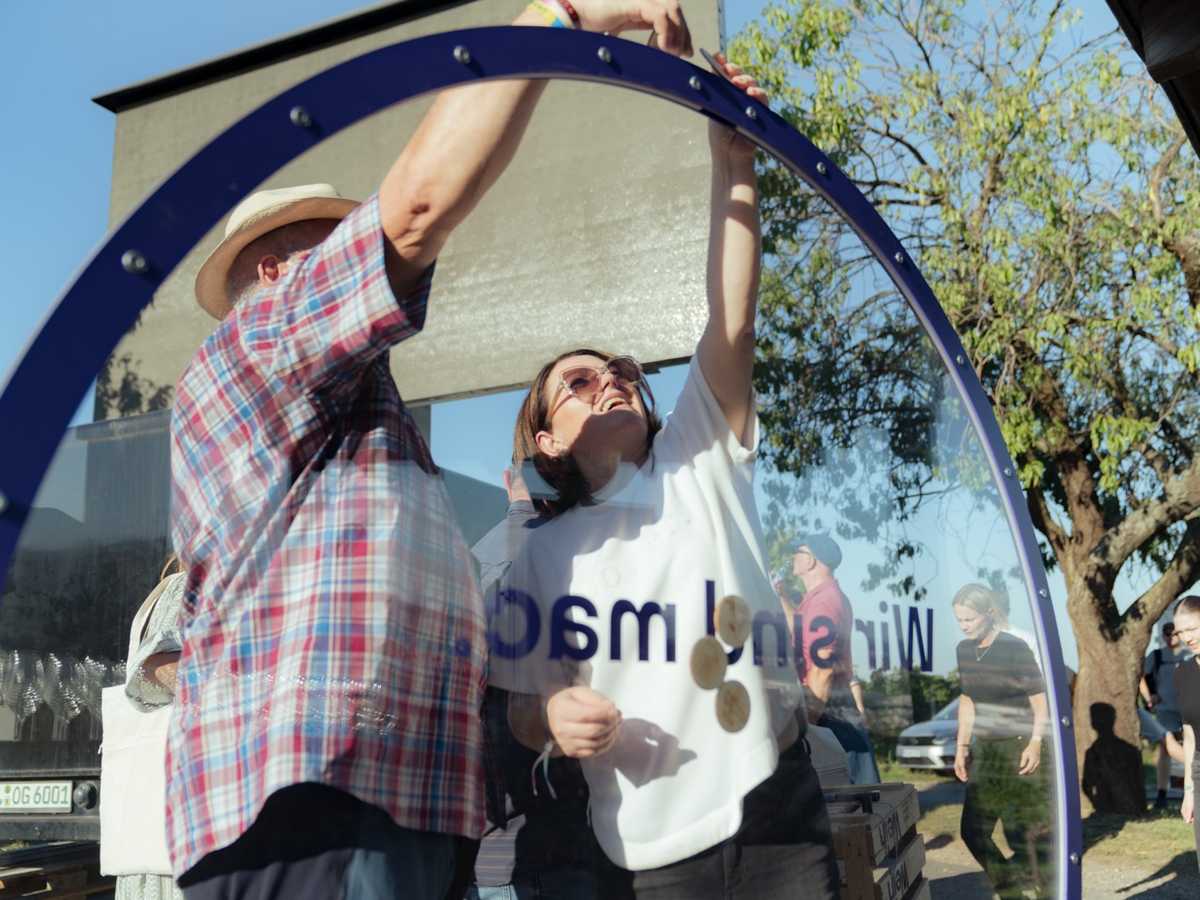
Economic sustainability.
Everything we do must also be economically viable. We see it as our duty to negotiate optimally in the interests of our customers in order to achieve good market prices. On the other hand, we want to do justice to our suppliers and source high-quality raw materials at fair prices. This is a balancing act that challenges us on a daily basis and requires particular effort, especially in times of global crisis.
As a company, we combine this challenge in strategic measures. And together we design solutions that are right for you and our suppliers. The fact that we are able to do this successfully time and time again makes us very proud. Our biggest customers have been choosing us again and again for over 25 years. And our partners, especially in assembly, have also been working with us for an average of 30 years. This long co-operation has resulted in a high level of mutual trust.
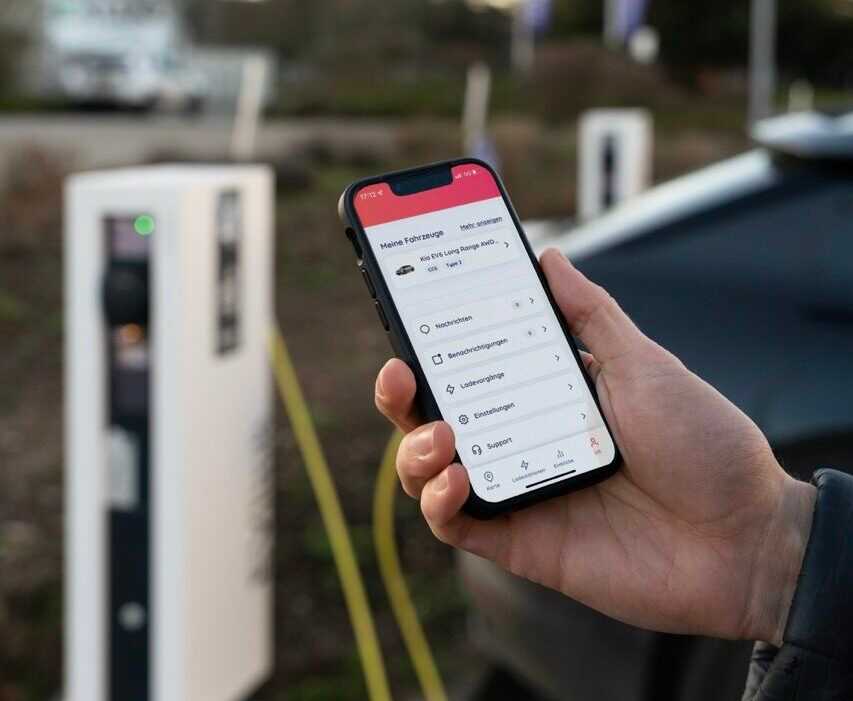
Full programme for the environment.
We are pioneers in our industry when it comes to sustainability. And we know that: We can do even better. We have set up an environmental programme to measure and evaluate our environmental measures. It helps us to record environmental indicators, set ambitious targets and manage measures. Not only for our customers, but also for ourselves. Because only those who set a good example can convince others.
We are continuing to drive energy efficiency in our company. Since 2010, we have been burning our own wood and expanding our partially and fully electric fleet. We promote local biodiversity on our over 60,000 square metres of green company premises. Our hard-working employees even include mac’s own bees.
We measure our own CO2 footprint and that of our projects. With our “Carbon Reduction Roadmap” workshop, we look at the hot spots of individual project phases and develop concrete proposals for action.
Responsible use of resources is particularly important in live marketing. We develop a closed-loop concept and focus on the life cycle of our materials. We focus on reusability and test new recycling systems to avoid waste.
Whether at our site or in our projects. We are constantly evolving in order to act in an ecologically sustainable manner.
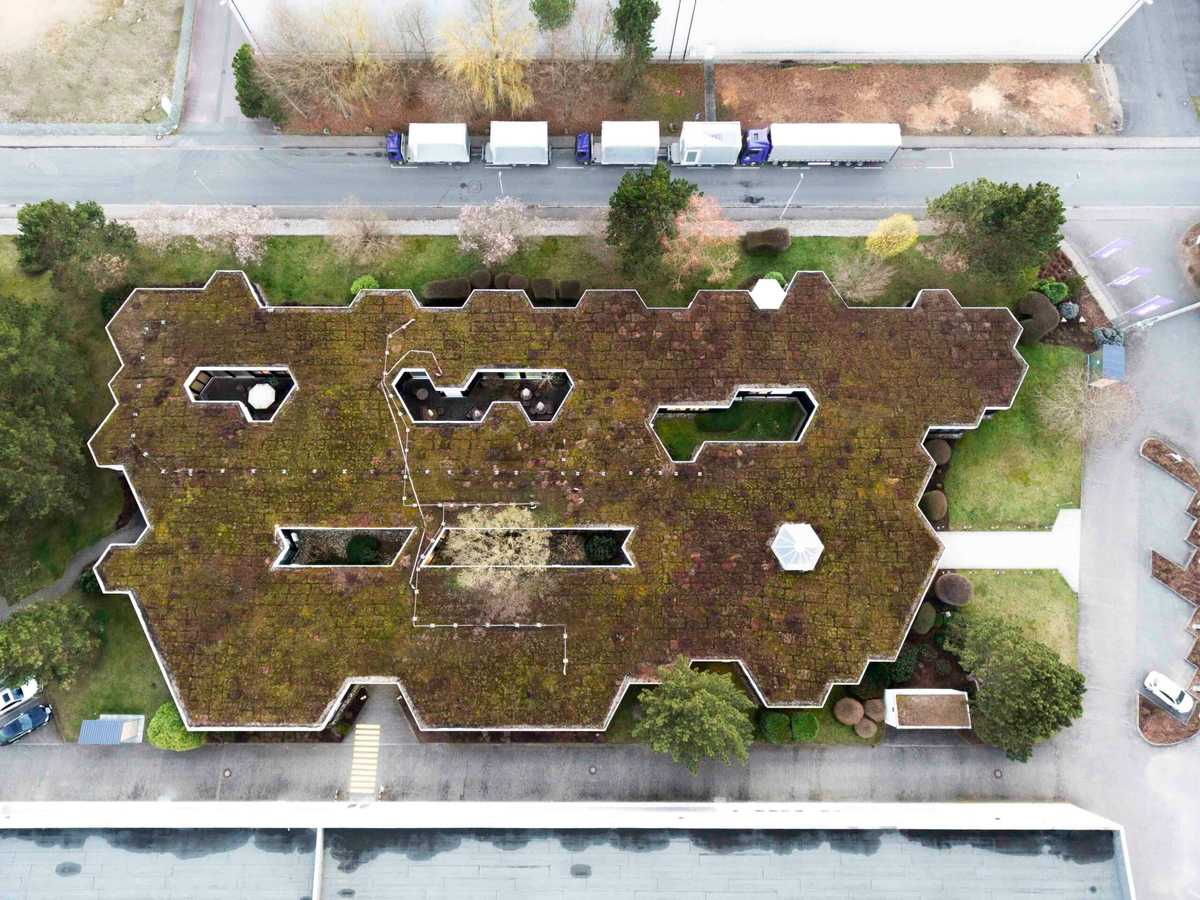
Do you want to know how sustainable your live communication can be?
Then we should get to know each other better. Take advantage of our comprehensive consulting service: with re:think! workshops, carbon roadmaps and carbon footprinting of projects, we give you the green power your project needs! We address the challenges of your industry, work together to gain a better understanding of sustainability, develop ideas that can be recycled – and enable you and your team to realise eventful and responsible live communication for your brand.
Our sustainability consultant Sandra Henze looks forward to your enquiry.
Our bottom line.
8,765 t
CO₂ savings by heating with wood waste instead of natural gas (measurement period 2010-2024).
This corresponds to around 3,000 round-trip flights from Frankfurt to New York.
12,539 t
CO₂ savings through green electricity instead of grey electricity (measurement period 2010-2024).
This corresponds to around 1,300 trips around the world by car (petrol engine, 7l/100km).
350 t
CO₂ savings by converting the vehicle fleet to electromobility (measurement period 2021-2024).
This corresponds to a round trip from Berlin to Paris by train every day for 15 years.
